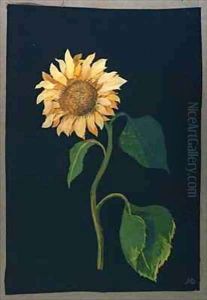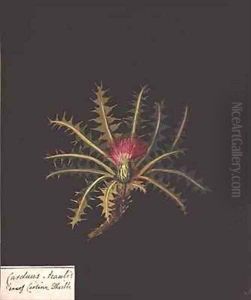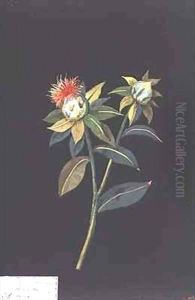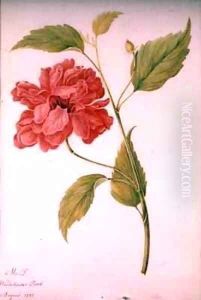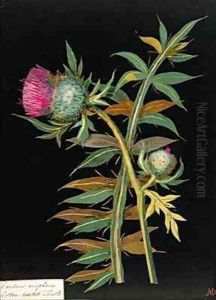Mary Granville Delany Paintings
Mary Granville Delany, born on May 14, 1700, in Coulston, Wiltshire, England, was a British artist, known especially for her intricately detailed, botanically accurate collages of flowers, which she termed 'Flower Mosaicks'. Her work is considered a precursor to the modern field of botanical illustration, blending artistic skill with a scientific approach to the study of flora. Delany's contributions to art and botany emerged in the later part of her life, beginning in her seventies, showcasing her remarkable creativity and attention to detail.
Delany's early life was marked by her integration into the circles of the British aristocracy and intellectual elite, which influenced her artistic and cultural education. She married Alexander Pendarves, a member of Parliament much older than herself, at the age of 17, a union that was short-lived due to his death in 1724. It wasn't until her second marriage to Dr. Patrick Delany, an Irish clergyman and close friend of Jonathan Swift, in 1743, that she found a supportive partner who encouraged her artistic pursuits.
Her most celebrated work began in 1772, after the death of her second husband, when Delany embarked on the creation of nearly 1,000 cut-paper botanical works. These pieces were meticulously crafted, with Delany using hand-colored papers to assemble her compositions, achieving a level of detail and realism that was unparalleled at the time. Her works caught the attention of King George III and Queen Charlotte, who became her patrons, providing her with a pension and lodging at Windsor.
Delany's legacy extends beyond her 'Flower Mosaicks'; she was also a talented embroiderer, letter-writer, and bluestocking, contributing to the intellectual and artistic dialogues of her time. Her correspondence and memoirs provide valuable insights into the cultural and social milieu of 18th-century Britain. Delany's work was largely forgotten after her death in 1788, but has seen a resurgence of interest in recent years, with scholars and art enthusiasts recognizing her contributions to botanical art, women's history, and the Enlightenment's intellectual landscape.
